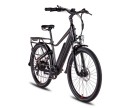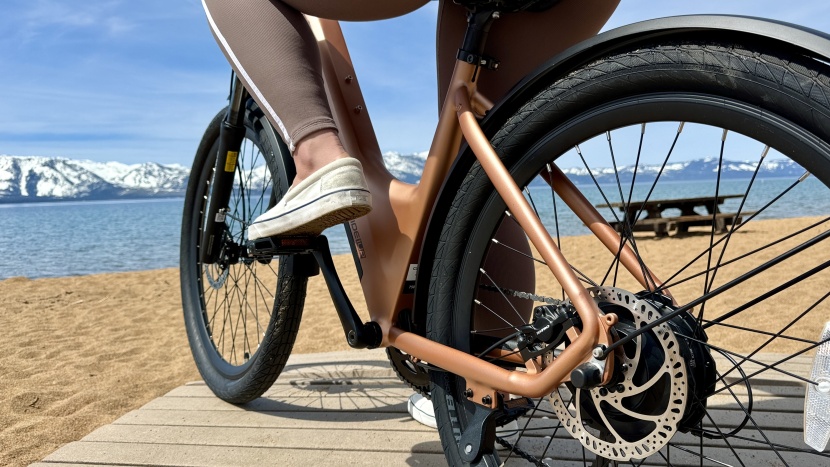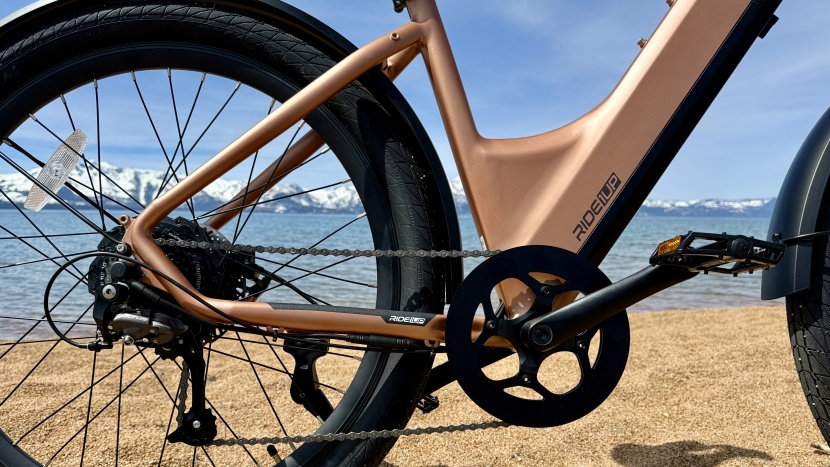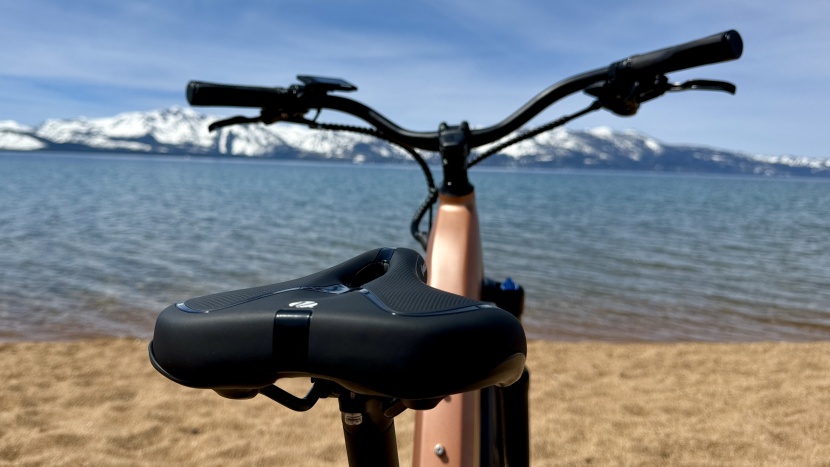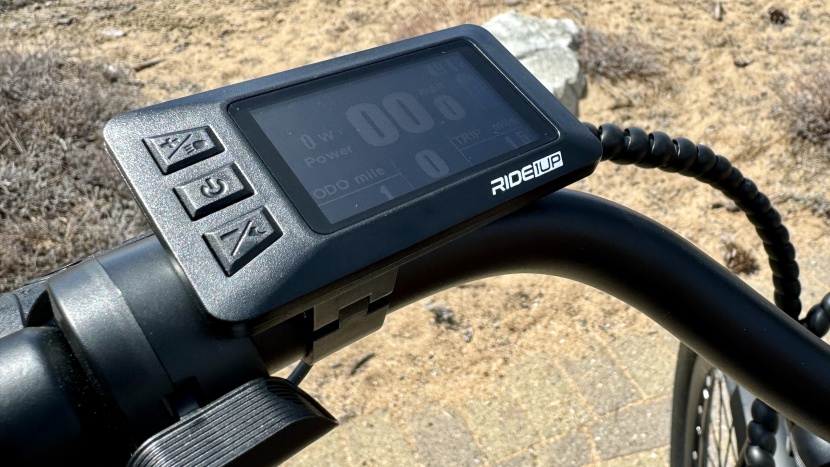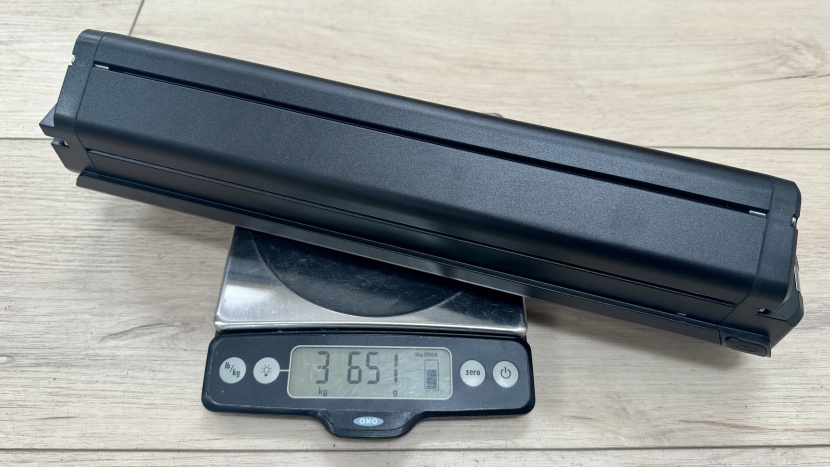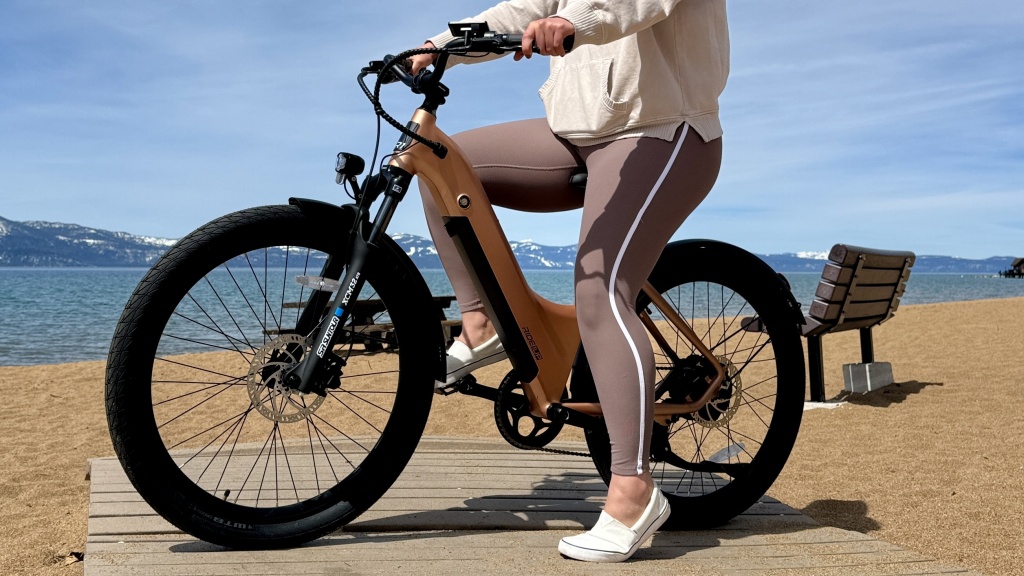Our Verdict
Compare to Similar Products
 This Product
Ride1Up LMT'D V2 | |||||
|---|---|---|---|---|---|
| Awards | Best Bang for Your Buck Folding Electric Commuter Bike | ||||
| Price | $1,595 List $1,595 at Ride1up | $999 List $999.00 at Lectric eBikes | $1,899 List $1,899 at Aventon Bikes | $1,699 List $1,699 at Rad Power Bikes | $1,599 List |
Overall Score  |
|||||
| Star Rating | |||||
| Bottom Line | A comfortable pleasure bike that doesn't skimp on comfort and is exceptionally easy to use but won't do all of the work for you | It's hard to argue with the value of this versatile and affordable folding electric bike | This bike checks all our boxes and is one of the best we've ever tested | This feature-packed Class 2 model boasts a powerful motor, impressive range, and a smooth ride | A comfortable pleasure bike that doesn't skimp on comfort and is exceptionally easy to use but won't do all of the work for you |
| Rating Categories | Ride1Up LMT'D V2 | Lectric XP 3.0 Step... | Aventon Level Step-... | Rad Power RadCity 5... | Velotric Discover 1... |
| Ride (25%) | |||||
| Range (25%) | |||||
| Power (25%) | |||||
| Interface (15%) | |||||
| Assembly (10%) | |||||
| Specifications | Ride1Up LMT'D V2 | Lectric XP 3.0 Step... | Aventon Level Step-... | Rad Power RadCity 5... | Velotric Discover 1... |
| Wheel size | 27.5-inch | 20-inch | 27.5-inch | 27.5-inch | 26-inch |
| Battery Size | 672Wh | 500Wh | 672Wh | 672Wh | 691Wh |
| E-Bike Class | Class 2 (Can be configured Class 3) | Class 2 (Can be configured Class 3) | Class 3 (Can be configured in Class 1 and 2) | Class 2 | Class 2 (Can be configured Class 3) |
| Motor Power | 750W | 500W | 500W (750W peak) | 750W | 500W |
| Number of pedal assist settings | 5 | 5 | 5 | 5 | 5 |
| Top speed throttle (mph) | 20 | 20 | 20 | 20 | 28 |
| Top speed pedal-assist (mph | 28 | 28 | 28 | 20 | 28 |
| Sensor | Torque | Cadence | Torque | Cadence | Cadence |
| Measured Distance Range (miles) | 26.8 | 24.51 | 28.4 | 30 | 26.7 |
| Charging speed | 7 hours | 5.2 hours | 7 hours | 7 hours | 4.8 hours |
| Frame material | Aluminum | Aluminum | Aluminum | Aluminum | Aluminum |
| Weight Limit (lbs) | 300 | 330 | 250 total (55 on rear rack) | 275 total ( 59.5 on rear rack) | 440 |
| Measured Weight | 60 lbs 13 oz | 62 lbs 8 oz | 60 lbs 10 oz | 64 lbs 11 oz | 61 lbs 4 oz |
| Folding? | No | Yes | No | No | No |
| Drivetrain | Shimano Altus 8-speed | Shimano Tourney 7-speed | Shimano Acera 8-speed | Shimano Tourney 7-speed | Shimano Tourney 7-speed |
| Brakes | Hydraulic Disc | Hydraulic Disc | Bengal Ares 3 Hydraulic Disc | Hydraulic Disc | Hydraulic Disc |
| Additional features | 100mm suspension fork, kick stand, fenders, front and rear lights, | Fenders, rear rack, front and rear lights, folding design, front suspension, mounting points for racks, baskets, and a bike lock, IP-65 rated for water resistance | 75mm suspension fork, front and rear fenders, rear cargo rack | Fenders, rear rack, front and rear lights, 50mm travel suspension fork | Fenders, front and rear lights, 80 mm suspension fork, kick stand, rack mounts |
| Warranty | One Year | One Year | Lifetime on frame, 1 year on components | One Year | Two Years |
Our Analysis and Test Results
Ride1UP has been building and selling value-oriented electric bikes directly to the consumer since 2018. Following in the footsteps of models like the Roadster V3, and Turris, the LMT'D V2 has big shoes to fill. Some bikes feel purpose-built for a special activity, while the LMT'D just wants to go for a ride.
There are many similarities between the LMT'D and most of the other RIde1Up bikes. For starters, it uses a lightweight aluminum frame with a battery pack integrated into its downtube. The wheels are 27.5", and it uses a 100mm suspension fork. The electronic side of the bike includes a 750W hub motor, a Key KD218 color LCD display, and a 48V 20a controller. This bike comes with an 8-speed drivetrain, hydraulic disc brakes, lights, fenders, and some quality comfort features. Where the LMT'D is different is in its style and handling; its swept-back handlebar and short reach prioritize alert cruising. It doesn't pretend to have a sporty disposition or lofty capabilities. The hub motor can assist your pedaling efforts up to 28 mph. When you'd rather skip the pedaling, you can simply use the throttle to transport you at up to 20 mph. The bike is available with an easy-to-mount, step-through frame or a traditional double diamond style. We're fond of the Brushed Copper color, but those looking for something more subdued can also choose Snowstorm white or Charcoal Satin.
Ride
Just one look at the LMT'D, and you can tell you're in for a comfortable ride. The bike's geometry keeps the rider seated upright, with a short reach to the handlebars. The controls are ergonomic and simple, with a low-profile, under-bar shifter and thumb paddle throttle. Smooth Tektro hydraulic brakes push mineral oil to stop you with minimal effort. The 27.5" wheels roll smooth and fast, while 2.4" Groov-e tires handle paved surfaces quite well, even when wet. The Suntour suspension fork mutes the larger bumps, while the supple tire casing adds additional comfort. The short stem and backswept handlebar minimize your forward weight distribution. There isn't much bending at the waist, which reduces pressure on your hands, but this gives the saddle an even more important role. We liked the Velo gel saddle with a comfort cut-out and found it mostly agreeable on all lengths of rides. Saddles can be a personal choice, and finding a particularly good fit on this bike will be even more important.
We often talk about bikes being purpose-built, sometimes for cargo carrying, off-roading, beach cruising, or running errands, but the LMT'D doesn't feel like it has a particular purpose. It transports you and provides rides that are more about the location and experience than the bike itself. Nothing about the bike distracts from its ride quality, nor does it feel incapable; it just doesn't feel built for a particular activity. The inverted tread tires aren't really made for off-pavement trekking, but they do just fine on hard-packed soil or gravel roads.
Available in two frame styles, the LMT'D step-through (ST) is our choice for most people. Getting on and off of this style bike is easier, and there aren't any real performance advantages to having a higher top tube. Some people prefer the aesthetic of the double diamond (XR) style frame; its step-over height is about 7 inches higher than the model we tested. Curiously, Ride1Up has different height recommendations for the two models, but there is no difference in the size or geometry of the frames. They claim the Step-Through to be appropriate for riders from 5' 1" to 6' 2" and the Step-Over to be for riders from 5' 6" to 6' 4". We'd recommend that you measure your inseam and consider how you'll use the bike to determine which is best for you, but we'd likely tell riders over 6' to look elsewhere due to the short distance between saddle and handlebars.
The components on the LMT'D feel like a curated list of Ride1Up's previous successes. We love the bike's torque sensor, which adds power proportional to how hard you push; it feels predictable and gives the e-bike a seamless integration with your input. The Tektro hydraulic disc brakes provide the “power-brake” feeling you might be used to in a modern automobile. The 8-speed Shimano drivetrain feels par for the course, but its under-bar trigger shifter is ergonomic and easy to use.
The Suntour XCM32 fork supports your weight with a coil spring and features a hydraulic lockout for times when you might not care for its squish. The integrated lights are powered by the bike's battery and controlled via the bike's display, so you needn't worry about being home before dark. Fenders and WTB Groov-e tires ready this bike for wet weather, and fret not; the bike carries an IP-65 water resistance rating. The bike does not include a rack but has standard rack mounts that will allow you to attach most aftermarket racks and baskets or panniers if you wish.
Range
Ride1Up claims the LMT'D is capable of 30-50 miles on a single charge, assuming you do a bit of pedaling. We perform our range test with no assistance from the rider and exclusively use the bike's throttle. Starting with a battery at full capacity, we set out on our range route to determine just how far a bike will go on a single charge. On our first range test, the LMT'D failed and shut down. Like a dog that sits down and refuses to walk, the motor shut down completely on a half-mile hill that measured 209 feet at a 7.1% grade. After several minutes, we were able to power the motor back on and resume, but again, the motor powered off under heavy load. Ride1Up states that the bike is capable of “ASSISTING” on the hills, not riding them for you, but we tested enough bikes with similar components to sense that something was amiss. After an email to tech support, Ride1Up sent us a replacement controller to fix the issue with this bike. Installing the new controller took about 45 minutes and was moderately involved.
On our second attempt, the bike was able to ride 26.8 miles on its 672Wh battery. This distance traveled over this course contained just over 1400 ft of elevation gain and rolling hills with a maximum grade of 9%. While the range seems totally reasonable under solely throttle power, it certainly could have gone further on flat ground. Our test rider with gear weighed in at 175 lbs, well shy of the bike's 300 lb weight limit.
Power
The 750W slant gear motor is made by AKM and runs on the bike's 48V system. We've tested several other bikes with the same motor and found them to be more powerful, so there are possibly variances in manufacturing or implementation. Notably, this motor advertises 95Nm of torque, which is more than most of the Ride1Up, and the same motor is used on the fat-tire Rift, yet it was the only bike we've found incapable of riding the hills in our range test. The bike has no issue accelerating a small hill without assistance and easily reaches 20 mph, its top throttle-assisted speed on milder inclines. In our acceleration test, where we also exclusively used the throttle, the LMT'D reached 20 mph in 9.5 seconds on level ground. Hitting GearLab hill, this bike was able to accelerate to 17.5 mph but slowed down to 13.1 mph on the steepest pitch.
There are five levels of pedal assist to choose from on the display; switching between them simply requires pressing the (+) or (-) buttons. The full power of the throttle is available at all levels and can be used to assist your acceleration. As you might imagine, the higher assist uses more battery power and thus shortens your expected range. The state of charge can be seen on the display and is shown either as a percentage of the remaining battery or as a more accurate voltage reading with 52V, meaning full, and 41.5V, meaning the battery's charge is depleted.
Interface
The KD218 integrated display/control sits adjacent to the left handlebar grip, making it easy to adjust assistance levels or turn the lights on with a simple press of the thumb. The color display shows relevant ride information like speed, trip distance, current power setting, state of charge, and wattage. Using the center button on the display, you can toggle between screens to access more information and settings. We've stated in most of our reviews that we prefer the screen centered in the middle of the handlebar, but using a display and controller unit as one piece makes that impractical. Overall, the high contrast, color LED display looks nice, minimizes exposed wiring, and is easy to read while operating the bike.
As with other bikes that utilize a Key display, holding down the plus button turns on the headlight, and holding down the minus button puts the bike into walk mode, where the motor engages at low power and pushes the bike along at walking speed. We love the feature on electric mountain bikes where portaging a steep section with a heavy bike is cumbersome, but it seems less useful on this bike. Still, it's an available feature, and users may find it helpful in situations we don't foresee.
Some users may never really interact with the battery aside from plugging it in to charge, but there are a few clever aspects to its implementation. The 672Wh battery plugs into a recess in the bike's downtube, where it locks in place. Having the battery lock is important not only because it's expensive but also because it's imperative that it stays securely attached for safety. Sometimes, stretching a cord to where the bike is parked isn't the easiest thing to do, so being able to remove the battery for charging is convenient. Additionally, the LMT'D weighs 60.8 lbs, which may be close to or above the weight limit of some bicycle racks, but removing the 8 lb battery for transport minimizes the load on your rack.
Assembly
The LMT'D arrives in an impressively small bike box; that should be a hint. The LMT'D requires a few more steps than most other consumer direct bikes we've built. The fork is packaged beside the bike with most of the headset on the steerer tube, and bearings are zip-tied inside the headtube. The crank and chainring are packaged separately, and a tool is included to mount the chainring. The cables and wiring are largely routed and connected, with the exception of the lights. The rear light installs into the fender, requiring a bit of fender twisting to access the interior arch. This job is made easier with an 8mm nut driver that is included with the provided tools. An instruction manual and tools are included in the box, but our manual omitted a few important steps. Those steps were covered in the video found on Ride1Up's website and linked to on the QR code inside the box. Building this bike on your own isn't out of the question if you consider yourself mechanically inclined and can follow detailed directions. That said, we found assembling this bike to be more involved than most other consumer direct e-bikes, so relying on your local bike shop for assembly is not a bad idea.
The above video shows the unboxing and unpackaging; it took one of our professional bicycle mechanics over an hour to build and tune the LMT'D. As with other Ride1Up bikes, the bike included two accessory boxes with the battery charger, several tools, including a set of ball-end Allen keys, and a hat. Undoubtedly, shipping the bike in the smallest possible box saves money, but the trade-off is additional assembly time.
Should You Buy the Ride1Up LMT'D?
Aside from building the LMT'D, it's one of the most user-friendly and approachable ebikes we've tested. This bike would be a great first bike for someone wary of a motorized bike or someone who doesn't have extensive cycling ambitions. This bike has a neutral, upright position that is great for commuting around town, on bike paths, or exploring neighborhoods. If you're interested in doing longer rides, consider a bike with less upright positioning, as long hours in this position put a lot of your weight on the saddle. While budget-friendly is a relative term, this bike feels like a good value with modern technology and reasonable quality componentry. The bike doesn't include a rack but can easily accept one, which would expand its utility but also add to its weight. We appreciate how unassuming this bike is; it's low profile and good-looking but doesn't skimp on comfort or performance. Our main reservation with this bike was its lack of power, but the replaced controller seems to have fixed that issue.
What Other Electric Commuter Bikes Should You Consider?
If this bike's general look and feel appeal to you, but you want expanded capabilities, check out the Ride1Up Prodigy V2; it's similar in style but uses a mid-drive motor and knobbier tires. If you'd like to conquer all terrain without worrying whether your bike is up for it, the Aventon Aventure.2 is our top pick for a go-anywhere bike. The Aventure.2 features massive tires, a powerful motor, and an excellent display located in the center of the handlebar; it's heavy but incredibly fun to ride. Another favorite of ours that features remarkable portability is the Lectric XP 3.0, which just happens to fold up. The XP 3.0 is an amazingly versatile bike that is big on convenience and low on price.





